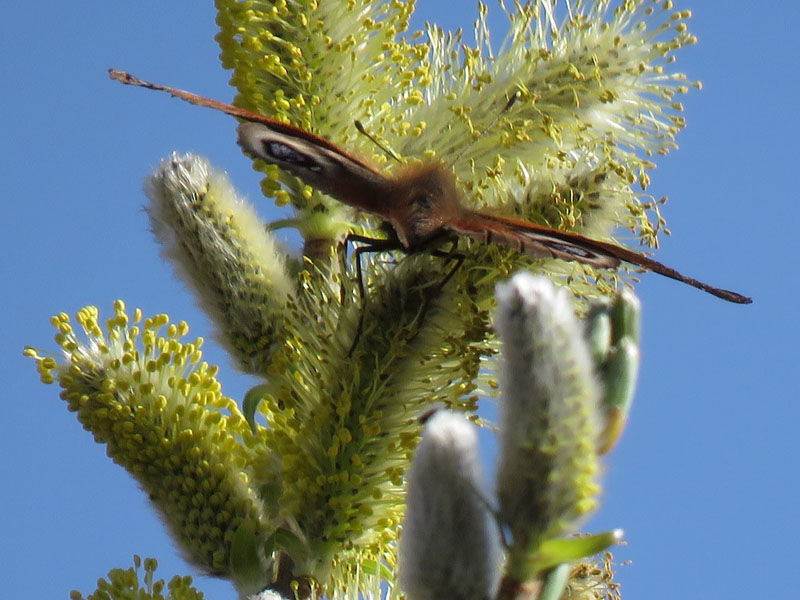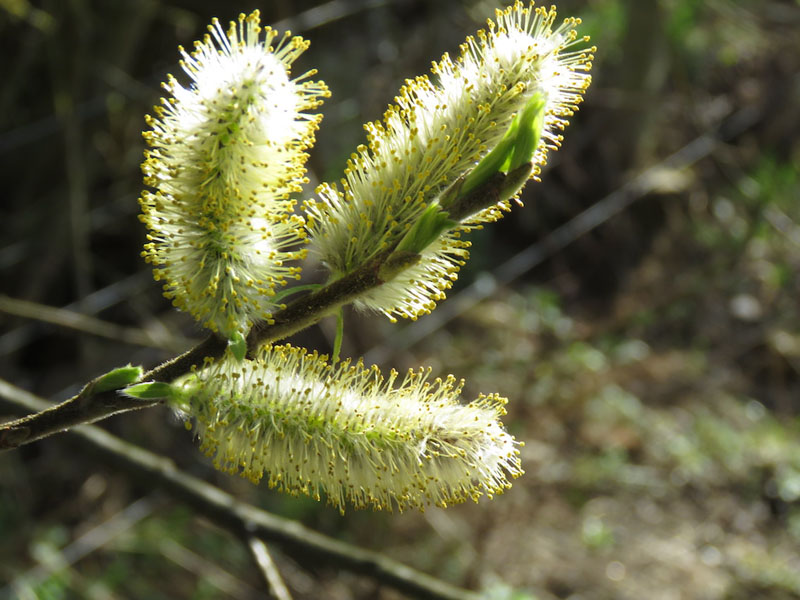Nature Notes – Sallow or Goat Willow
My intention this month was to tell you about the insects that benefit from the Sallow, a tree in the Willow family. Not being particularly “good” on trees I needed to do some research. This was so interesting that the insects will have to wait until next month.

The Sallow is a native tree and over time it has acquired many common names. The name Goat Willow, has been around since at least 1546. It appears in the “herbal” by Hieronymous Bosch as a suitable browse for goats. Pussy Willow derives from the silky grey opening buds that look like cat’s paws and Palm Willow refers to the use of willow branches in church services on Palm Sunday.
Tree identification is hard! Members of the willow family hybridise freely and Sallows often “cross” with Grey Willow. To make matters worse, Sallows are dioecious. That is, there are separate male and female trees with different catkins. (This is one of the reasons that they are prolific pollen producers as pollination by insects is far more likely than airborne pollination).
As it takes more than a few sentences to explain the differences, I recommend the Collins, “Guide to British Trees” or the internet, if you want to check out whether a tree you photograph is a pure Sallow or a hybrid.
Withies for weaving baskets and fences come from young willow stems (including those from Sallows) and the older wood makes good charcoal. Cricket bat willow, another member of the willow family is used, unsurprisingly, for making cricket bats.
However, Sallow is too soft for such use. There were historically many medicinal uses of Sallow and arguably the best know is in pain relief. The bark is a source of salicin and after much skillful preparation this was no doubt effective; salicin was subsequently used to develop Aspirin.
Willow
Willow trees generally, thrive in damp habitats and are often found near water. However Sallows can survive in drier conditions and are quite widely distributed, often away from water. They are one of the brightest trees from early spring onwards. The “pussy” willow buds are sprays of silky grey from February into March and as the catkins open the trees glow with tiny lemon coloured florets.

The catkins are egg shaped and brightest in male trees and longer and greener in female trees. Together with flowering Blackthorn, the countryside is enhanced long before most other tree have come into leaf, with vivid splashes of white and yellow in late March and early April.
See – How to grow Pussy Willow Trees
In readiness for May’s Nature Note you may wish to find and identify the butterfly that is “nectaring” on Sallow pollen in this month’s photographs. In the meantime, if you see a Sallow in bloom when you are out walking, check it out for early butterflies.
David Scott




 Look after your mind – Affirmations
Look after your mind – Affirmations

